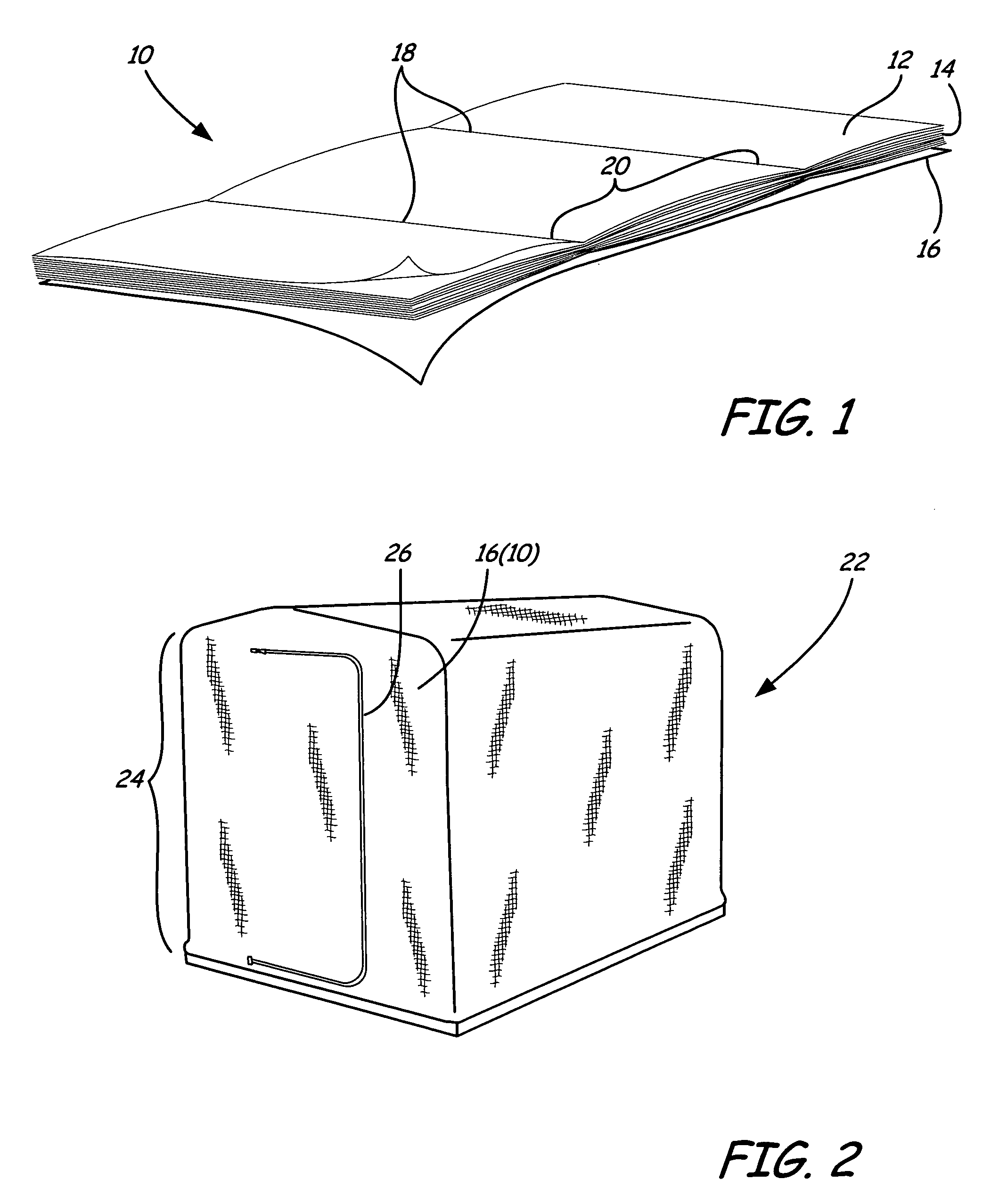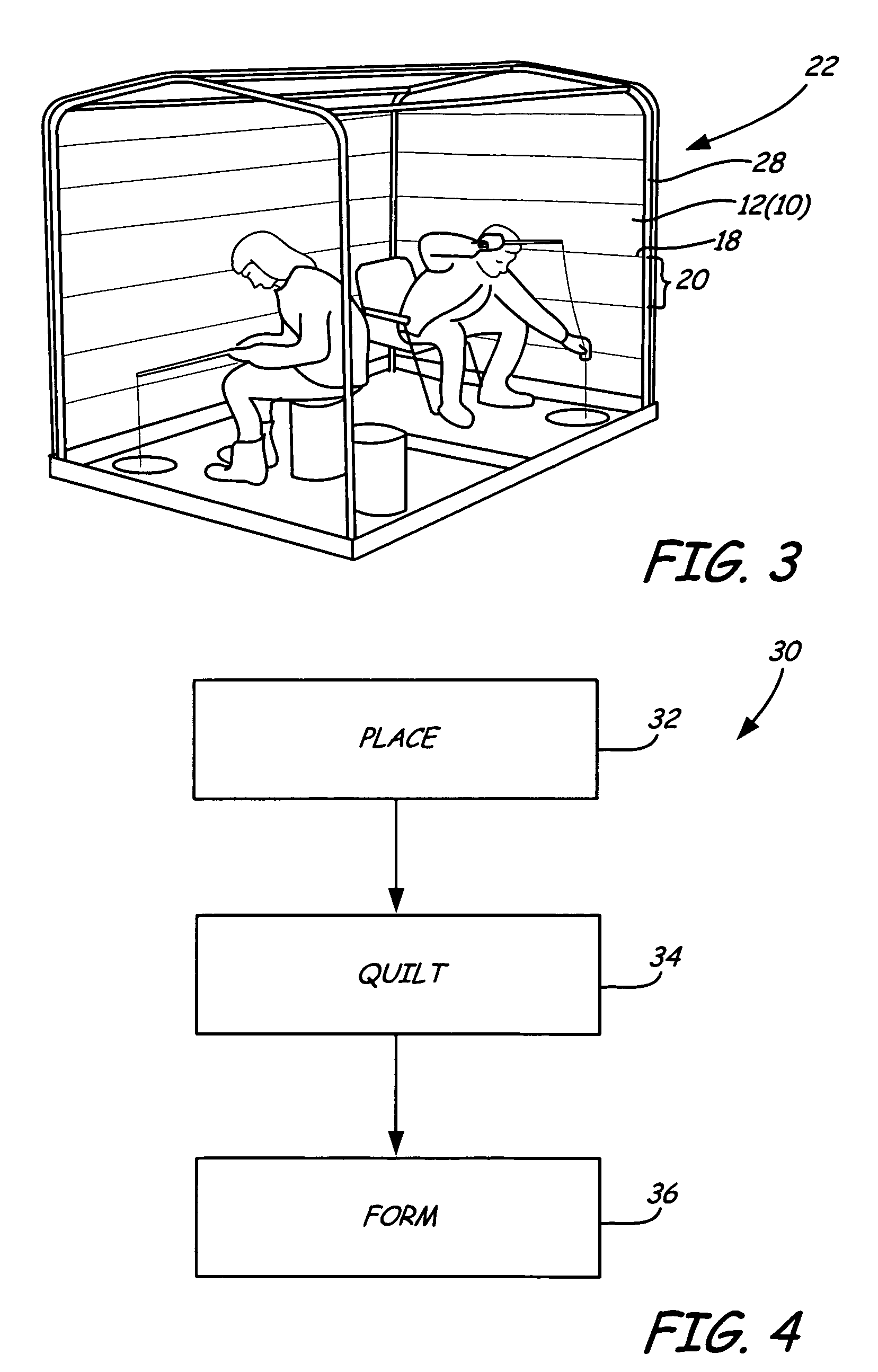Flame resistant insulated fabric for shelters
a technology of insulated fabric and flame retardant fabric, which is applied in the field of flame retardant insulated fabric for shelters, can solve the problems of interior condensation problems, plague ice fishermen, and cloth shelters that do not provide sufficient warmth or ventilation
- Summary
- Abstract
- Description
- Claims
- Application Information
AI Technical Summary
Problems solved by technology
Method used
Image
Examples
example 1
Minnesota Mining and Manufacturing Co. (3M), of Saint Paul, Minn., developed fire-resistant insulation sold under the trademark “THINSULATE”. Unlike the insulations developed before, Thinsulate™ Insulation FR is fire-resistant. Thinsulate™ Insulation FR, quilted between an inner and outer shell, does meet or exceed the industry flame resistance safety standard, Camping Products Association International (CPAI-84). The current physical requirements for flame-resistant materials used in camping tentage (CPAI-84, Section 6, wall and top material) include:No individual specimen shall have an afterflame of more than 4.0 seconds.The average afterflame time for all specimens in a sample unit shall not exceed 2.0 seconds.Portions or residues that break or drip from the test specimens shall not continue to flame after they strike the burner platform.
Current CPAI-84 testing for wall and top material requires test specimens to measure 70 mm by 300 mm with the long dimensions parallel to either...
example 2
Insulated, fire-resistant shelter fabric (NorpacR2™ Fabric with Thinsulate™ Insulation FR Type 120) was compared to standard ice fishing shelter fabric (polyester and cotton blend fabric by Canvas Craft). Thickness measurements were determined using the 3M thickness tester having a test surface of 12 inches square. The reading was taken to the nearest hundredth centimeter with the same under a pressure of 0.002 psi. The insulation values of the samples were measured on a guarded hot plate, which measures the heat transfer from a hot plate through the sample into a cold environment. The thermal resistance (Clo value & R value) of the sample is determined under equilibrium conditions with 1 meter / second air blowing across the surface. Total Thermal Resistance of Insulation Value (Rcf) represents the insulation of the sample and the boundary of air. Thermal Resistance of the sample alone, Rcf, represents the insulation value of the sample with the Base Plate value of 0.43 Clo subtracte...
PUM
| Property | Measurement | Unit |
|---|---|---|
| Length | aaaaa | aaaaa |
| Linear density | aaaaa | aaaaa |
| Linear density | aaaaa | aaaaa |
Abstract
Description
Claims
Application Information
 Login to View More
Login to View More - R&D
- Intellectual Property
- Life Sciences
- Materials
- Tech Scout
- Unparalleled Data Quality
- Higher Quality Content
- 60% Fewer Hallucinations
Browse by: Latest US Patents, China's latest patents, Technical Efficacy Thesaurus, Application Domain, Technology Topic, Popular Technical Reports.
© 2025 PatSnap. All rights reserved.Legal|Privacy policy|Modern Slavery Act Transparency Statement|Sitemap|About US| Contact US: help@patsnap.com



